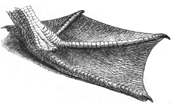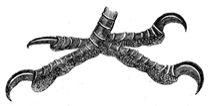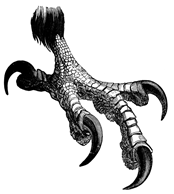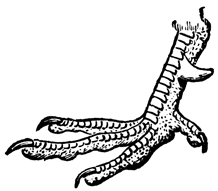






Water birds such as ducks and geese have webbing between their toes for swimming. The webbing helps water birds paddle through the water more efficiently.
Birds such as woodpeckers have feet that are adapted for climbing. Two of the toes face forward and the other two face backward to help the bird balance and not fall while climbing up and down tree trunks. Also, each toe has sharp nails that help the bird dig into the wood.
Birds that do not fly have feet that are adapted for running so that they can escape predators. Birds such as emus and ostriches have three toes, all of which face forward. These birds also have strong legs for kicking and sharp claws on each toe to help protect them.
Songbirds such as wrens and blue jays have feet that are adapted for perching. Their feet have four flexible toes, with one pointing backward. This foot design is ideal for grasping tree branches.
Predatory birds or raptors like hawks and eagles have claw-like feet called talons for grabbing prey.
Chickens and pheasants have feet for scratching in the dirt to uncover insects and seeds. Their feet have four long toes with sharp nails for digging and scratching.